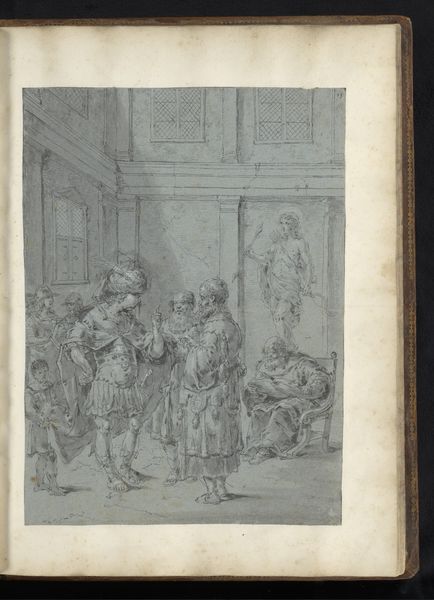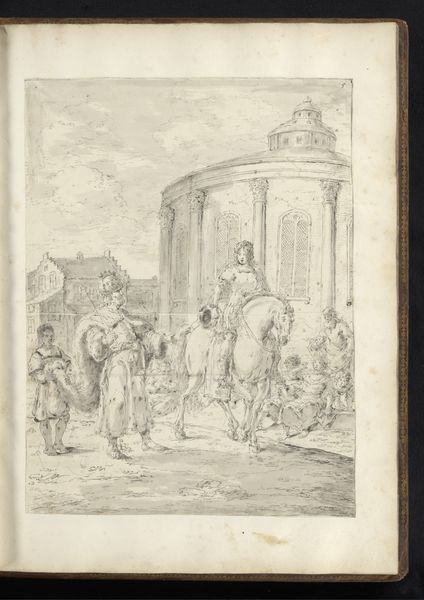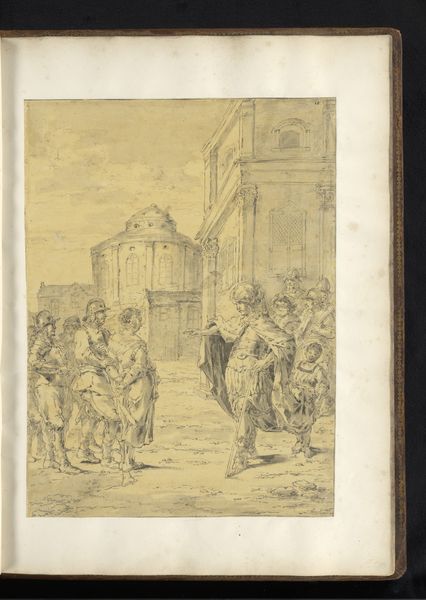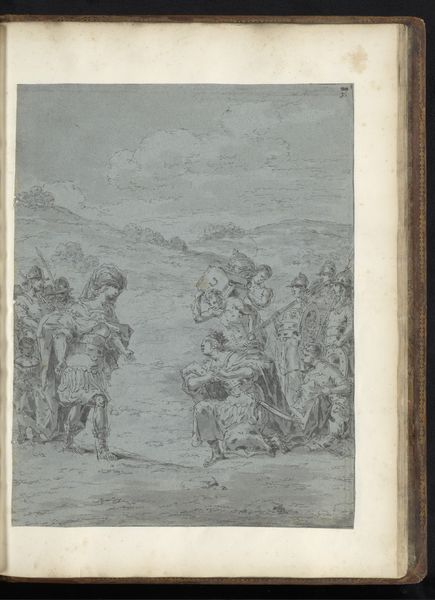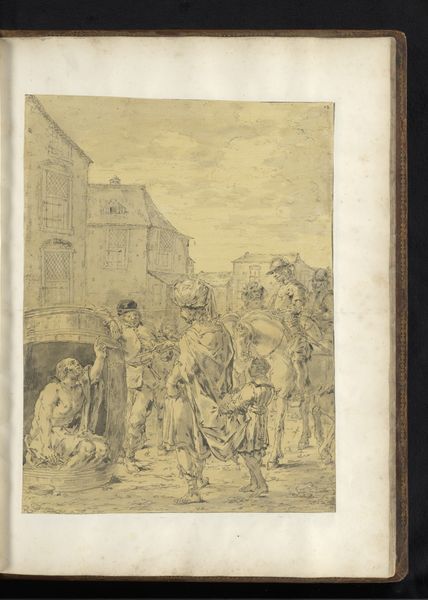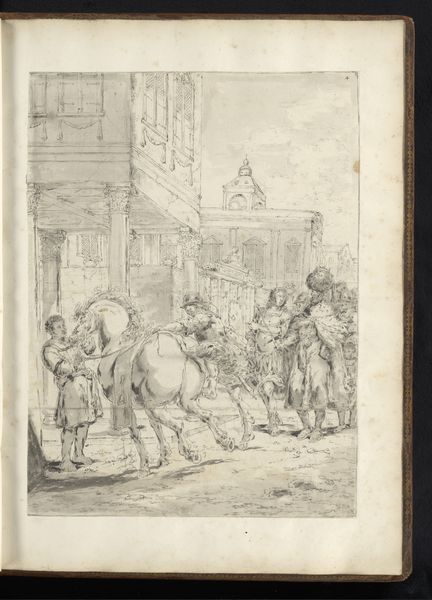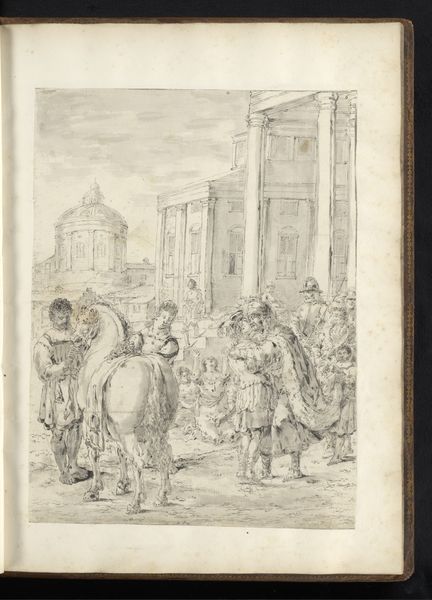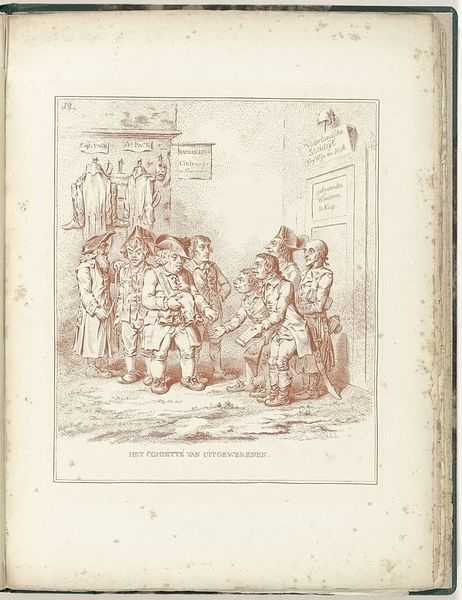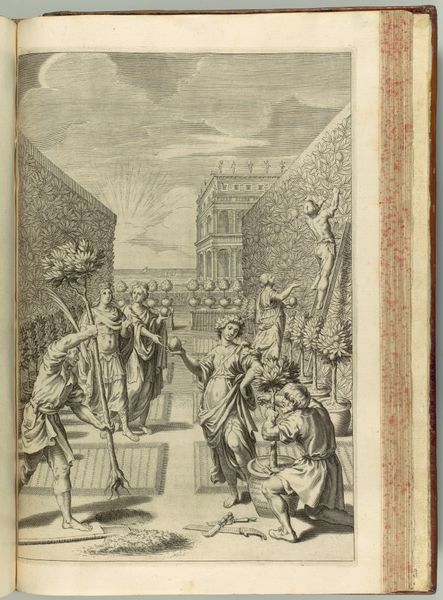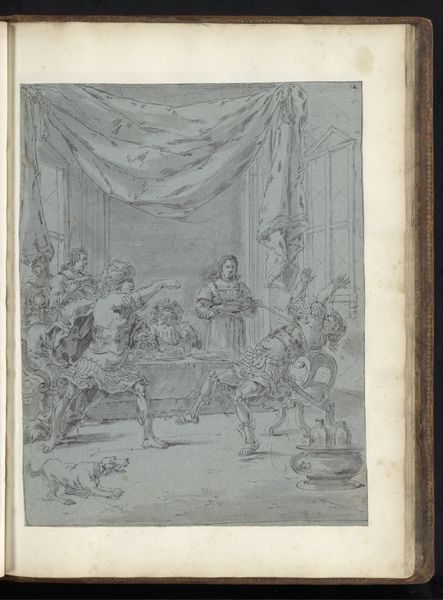
drawing, paper, ink
#
drawing
#
baroque
#
ink painting
#
paper
#
ink
#
coloured pencil
#
genre-painting
#
history-painting
#
watercolor
Dimensions: height 405 mm, width 313 mm
Copyright: Rijks Museum: Open Domain
Curator: Leonaert Bramer's drawing, created circa 1655 to 1665, is titled "Alexander the Great Visiting the Temple of Jupiter." It’s currently held at the Rijksmuseum, rendered in ink on paper. The baroque style provides an evocative look at the ancient world. What are your first thoughts? Editor: The sepia tones lend it an immediate sense of age. The temple setting feels almost like a stage, and Alexander—materially represented—appears somewhat diminutive within the overall composition. Curator: Right. Let's unpack this stage, as you call it. Bramer places Alexander within a highly theatrical setting. The bishop-like figure’s raised hand gesture, alongside the architectural backdrop, lends the piece to baroque theatricality—a lens that was employed often in art that depicts leadership. Is this grand welcome genuine? Or, perhaps, is it forced? Editor: Forced, perhaps. What stands out to me is the execution of the figures themselves. Bramer employs economical lines to suggest texture, from the bishop’s robes to Alexander's cloak. This approach draws attention to the craft of creating this illusion of wealth and power, right? The use of basic materials underlines the artifice. Curator: That resonates. This historical rendering serves as a prompt to interrogate constructions of power. Alexander's historical significance allows us to examine representations of masculine leadership. The setting also begs the question, how does a figure use a higher power such as religion to gain popularity, power and validity. Editor: Indeed. I'm particularly drawn to the immediacy of the drawing. One can almost sense the artist working with simple tools. It grounds the image in a real process of material creation that mirrors Alexander’s attempts to make real his empire through tangible conquests and material achievements. Curator: Ultimately, this image reveals much about how power dynamics function across various strata of society through the ages. Editor: Absolutely. Examining both the artist's means and Alexander's, reveals power as performance. Curator: That intersection reveals more than expected, then. Editor: It does, highlighting the way the materials reflect history, and vice versa.
Comments
No comments
Be the first to comment and join the conversation on the ultimate creative platform.
